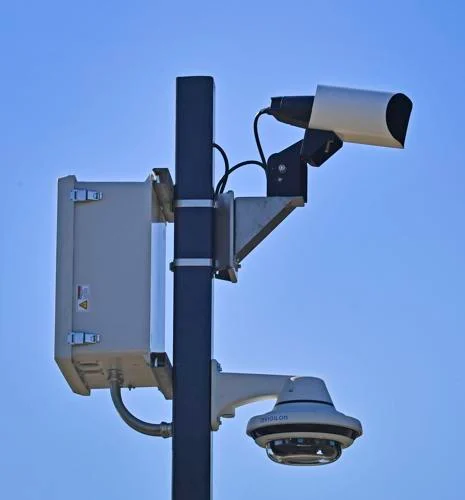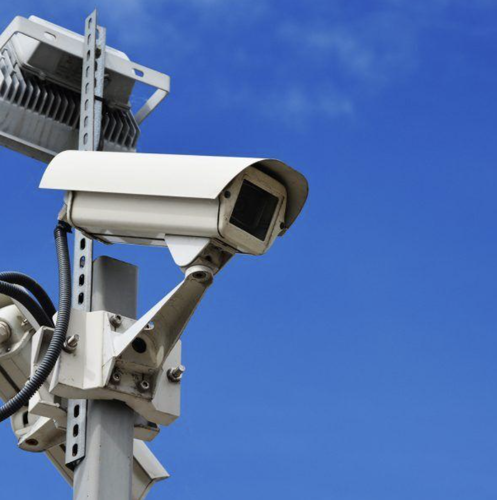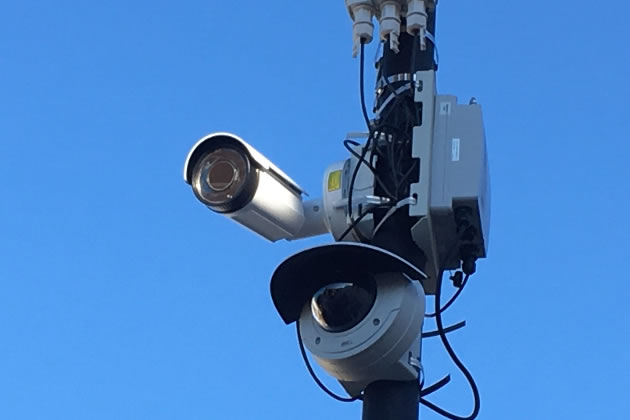How Automated License Plate Reader Cameras Improve Fleet Management
Fleet management has undergone a significant transformation in the past decade, largely due to the advent of advanced technologies. One such technological innovation that stands out is the Automated License Plate Reader (ALPR) camera, also known as the Automatic Number Plate Recognition (ANPR) camera. These devices are revolutionizing the way fleets are managed by providing real-time data, enhancing security, improving operational efficiency, and driving cost savings. This comprehensive article explores the myriad ways ALPR cameras are improving fleet management, detailing their features, benefits, and applications.
Table of Contents
Understanding ALPR and ANPR Cameras
Automated License Plate Reader (ALPR) and Automatic Number Plate Recognition (ANPR) cameras are systems designed to capture images of vehicle license plates, convert these images into readable text using optical character recognition (OCR), and then process this information against various databases. These systems are capable of reading plates in real-time, even under challenging conditions such as high speeds, poor lighting, or adverse weather. The data captured by these cameras can be used for a variety of purposes, including traffic enforcement, toll collection, and, importantly, fleet management.

Key Features of ALPR and ANPR Cameras
High Accuracy and Speed: Modern ALPR/ANPR cameras can accurately read and process license plates in real-time. They are designed to function effectively at high speeds and under various environmental conditions, ensuring that data capture is consistent and reliable.
Data Integration: These systems integrate seamlessly with other software platforms, enabling comprehensive data analysis and reporting. This integration capability allows for the synchronization of ALPR data with fleet management systems, enhancing the overall efficiency of fleet operations.
Scalability: ALPR/ANPR systems can be scaled to cover extensive areas or numerous vehicles, making them suitable for both small fleets and large transportation networks. This scalability ensures that the technology can grow with the fleet, accommodating increasing demands.
Remote Monitoring and Management: Many ALPR solutions offer remote access, allowing fleet managers to monitor and manage vehicles from anywhere, at any time. This remote capability is crucial for maintaining oversight of fleet operations in real-time, regardless of the manager’s location.
Benefits of Automated License Plate Reader Cameras in Fleet Management
Enhanced Security
One of the primary advantages of implementing ALPR cameras in fleet management is the enhancement of security. Fleet vehicles represent significant investments, and protecting these assets is crucial. ALPR systems contribute to security in several ways:
Theft Prevention and Recovery: ALPR cameras continuously monitor the locations of fleet vehicles and compare license plates against stolen vehicle databases. This capability allows for immediate alerts in the event of unauthorized use or movement, facilitating quicker recovery of stolen assets. By providing precise, real-time location data, these systems can significantly improve the chances of recovering stolen vehicles.
Access Control: In environments where vehicle access needs to be controlled, such as company premises or restricted areas, ALPR cameras can play a vital role. By automatically verifying license plates against a database of authorized vehicles, these systems ensure that only approved vehicles can enter, thereby enhancing security.
Improved Operational Efficiency
ALPR technology significantly enhances the operational efficiency of fleet management. Here’s how:
Real-time Tracking: ALPR systems provide real-time location data for all vehicles in the fleet. This information is invaluable for optimizing routes, managing schedules, and ensuring that vehicles are used efficiently. Real-time tracking allows fleet managers to make dynamic adjustments to routes based on current conditions, such as traffic or weather, thereby improving overall fleet performance.
Automated Documentation: One of the time-consuming aspects of fleet management is maintaining accurate records of vehicle usage, including entry and exit times, distances traveled, and service intervals. ALPR cameras automate this process, reducing the need for manual documentation and minimizing the potential for human error. This automation ensures that all relevant data is captured accurately and consistently.
Maintenance Scheduling: By tracking mileage and usage patterns, ALPR systems help fleet managers schedule maintenance proactively. This proactive approach reduces the likelihood of unexpected breakdowns, ensures that vehicles are maintained in optimal condition, and extends the lifespan of fleet assets. Regular maintenance scheduling based on actual usage data also helps better allocate resources and plan maintenance activities.
Cost Savings
Implementing ALPR technology can lead to substantial cost savings in various areas of fleet management:
Reduced Fuel Consumption: By optimizing routes and reducing idle times, ALPR systems help in lowering fuel consumption. Efficient routing ensures that vehicles take the shortest or fastest routes, minimizing unnecessary mileage and fuel usage. Over time, these savings can add up to a significant reduction in fuel costs.
Lower Insurance Costs: Enhanced security measures, such as theft prevention and improved vehicle monitoring, can lead to lower insurance premiums. Insurance providers often offer discounts to fleets that employ advanced security technologies, as these measures reduce the risk of theft and damage.
Minimized Fines and Violations: ALPR systems can help ensure compliance with traffic regulations and company policies, reducing the likelihood of fines and violations. By monitoring vehicle speeds, adherence to routes, and other critical parameters, these systems promote safer and more compliant driving behavior.
Enhanced Compliance and Reporting
Regulatory compliance is a critical aspect of fleet management, and ALPR cameras facilitate this by:
Accurate Record Keeping: Automated ALPR systems ensure accurate and detailed records of vehicle usage. This data is essential for complying with various regulatory requirements, such as hours of service (HOS) regulations for commercial drivers. Accurate record-keeping also supports auditing processes and helps in maintaining transparency.
Incident Reporting: In the event of an accident or traffic violation, ALPR data provides precise information about vehicle location and movement at the time of the incident. This information is invaluable for investigations, insurance claims, and legal proceedings. Detailed incident reports based on ALPR data can help in resolving disputes and establishing accountability.
Data-Driven Decision Making
ALPR technology generates a wealth of data that can drive strategic decision-making in fleet management:
Performance Metrics: Detailed reports on vehicle performance, utilization, and driver behavior provide fleet managers with insights into how the fleet is operating. These metrics help identify improvement areas, optimize fleet utilization, and enhance overall performance.
Trend Analysis: By analyzing long-term data, fleet managers can identify trends and patterns that inform forecasting and planning. For example, understanding seasonal variations in vehicle usage or identifying common maintenance issues can help in better preparing for future needs and allocating resources more effectively.

Practical Applications of ALPR Cameras in Fleet Management
Public Transportation:
In public transportation, ALPR cameras enhance the efficiency and reliability of bus and train fleets. Real-time data on vehicle locations allows for better route management, schedule adherence, and passenger information. Additionally, ALPR systems can help in managing fleet security, preventing unauthorized access, and ensuring the safety of passengers.
Logistics and Delivery Services:
For logistics and delivery services, ALPR systems are indispensable tools. They ensure timely deliveries by optimizing routes, tracking vehicles, and preventing unauthorized use. Real-time tracking and automated documentation streamline operations, reduce delivery times, and enhance customer satisfaction. Additionally, these systems can help in managing the fleet’s compliance with delivery schedules and regulatory requirements.
Law Enforcement and Emergency Services:
Law enforcement and emergency services benefit greatly from ALPR technology. These systems enable rapid response times, accurate vehicle tracking, and effective deployment of resources. For instance, ALPR cameras can be used to locate stolen vehicles, track suspects, and manage emergency vehicle fleets. By providing real-time data, these systems enhance the effectiveness and efficiency of law enforcement and emergency response operations.
Rental and Leasing Companies:
Rental and leasing companies use ALPR cameras to monitor vehicle usage, prevent fraud, and manage inventory effectively. By tracking the location and usage of rental vehicles, these companies can ensure that vehicles are returned on time, maintained properly, and used per rental agreements. ALPR systems also help in identifying unauthorized use and preventing theft, thereby protecting valuable assets.
Corporate Fleets:
Corporations with large fleets use ALPR technology to manage employee transportation, monitor vehicle use, and ensure compliance with corporate policies. These systems provide real-time data on vehicle locations, usage patterns, and driver behavior, enabling better management of corporate fleets. Additionally, ALPR systems help in ensuring that vehicles are used for authorized purposes and comply with company policies.
Challenges and Considerations
While ALPR technology offers numerous benefits, there are challenges and considerations that fleet managers must address:
Privacy Concerns:
The use of ALPR cameras raises privacy concerns, as they continuously capture and store data on vehicle movements. It is crucial to have clear policies and safeguards in place to ensure that this data is used ethically and complies with privacy laws. Fleet managers must be transparent about data collection practices, obtain necessary consent, and implement measures to protect data privacy.
Initial Investment:
The initial investment in ALPR technology can be significant. The cost of cameras, software, and integration with existing systems can add up. However, the long-term benefits, such as cost savings, improved efficiency, and enhanced security, often outweigh the upfront costs. Fleet managers should conduct a thorough cost-benefit analysis to justify the investment and plan for the financial outlay.
Data Management:
The volume of data generated by ALPR cameras can be overwhelming. Effective data management systems are necessary to process, analyze, and utilize this information efficiently. Fleet managers need to invest in robust data storage and analysis solutions, as well as train staff to handle and interpret the data effectively. Proper data management ensures that the information generated by ALPR systems is actionable and beneficial.
Technical Issues:
Like any technology, ALPR systems can face technical issues, such as hardware malfunctions or software glitches. Regular maintenance and updates are essential to keep the system running smoothly. Fleet managers should establish a maintenance schedule, have a plan for troubleshooting technical issues, and ensure that there is support available from the technology provider.

Future Trends in ALPR Technology
The future of ALPR technology in fleet management looks promising, with several trends on the horizon:
Integration with IoT:
The Internet of Things (IoT) will further enhance ALPR systems by enabling more seamless integration with other connected devices and systems. This integration will provide a holistic view of fleet operations, allowing for more comprehensive data analysis and better decision-making. For example, integrating ALPR cameras with vehicle telematics systems can provide a complete picture of vehicle performance and usage.
Artificial Intelligence and Machine Learning:
AI and machine learning will improve the accuracy and functionality of ALPR cameras, enabling predictive analytics and more sophisticated data analysis. These technologies can help in identifying patterns, predicting maintenance needs, and optimizing fleet operations. For example, machine learning algorithms can analyze ALPR data to predict traffic patterns and suggest optimal routes for fleet vehicles.
Enhanced Analytics:
Future ALPR systems will offer more advanced analytics capabilities, helping fleet managers make even more informed decisions based on comprehensive data insights. Enhanced analytics will enable deeper analysis of vehicle performance, driver behavior, and operational efficiency, leading to better fleet management practices. For instance, advanced analytics can identify trends in fuel consumption, maintenance issues, and driver performance, providing actionable insights for improvement.
Increased Adoption:
As the technology becomes more affordable and its benefits more widely recognized, the adoption of ALPR systems in fleet management is expected to grow significantly. More organizations will realize the advantages of ALPR technology, leading to broader implementation across various industries. Increased adoption will drive further innovation and improvements in ALPR systems, making them even more effective and accessible.
Conclusion
Automated License Plate Reader (ALPR) cameras, also known as Automatic Number Plate Recognition (ANPR) cameras, are transforming fleet management. These systems offer numerous benefits, including enhanced security, improved operational efficiency, cost savings, better compliance, and data-driven decision-making. By understanding and leveraging the capabilities of ALPR technology, fleet managers can optimize their operations, ensuring that their fleets are safer, more efficient, and more cost-effective.
The future of ALPR technology in fleet management is bright, with advancements in AI, IoT, and data analytics poised to further enhance its capabilities and applications. For fleet managers looking to stay ahead in a competitive and evolving landscape, investing in ALPR technology is a strategic move that promises significant returns. As the adoption of ALPR systems grows, the benefits they provide will continue to drive improvements in fleet management, making them an essential tool for modern fleet operations.

